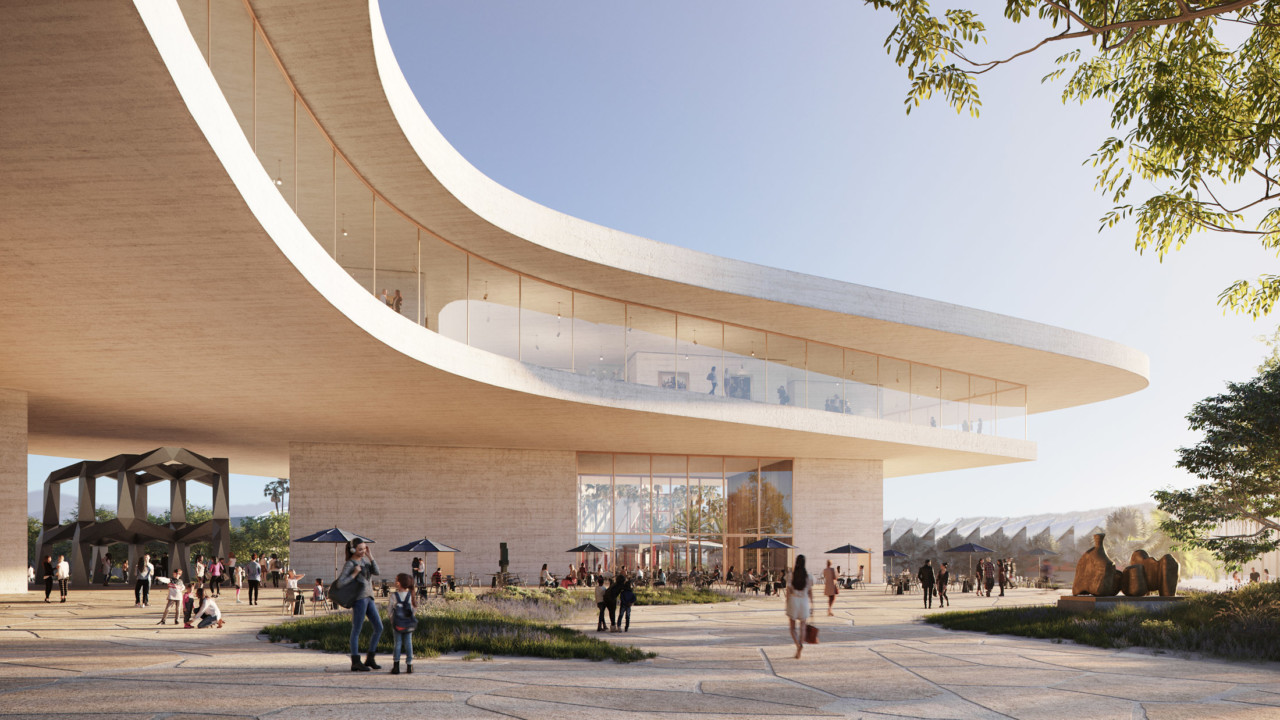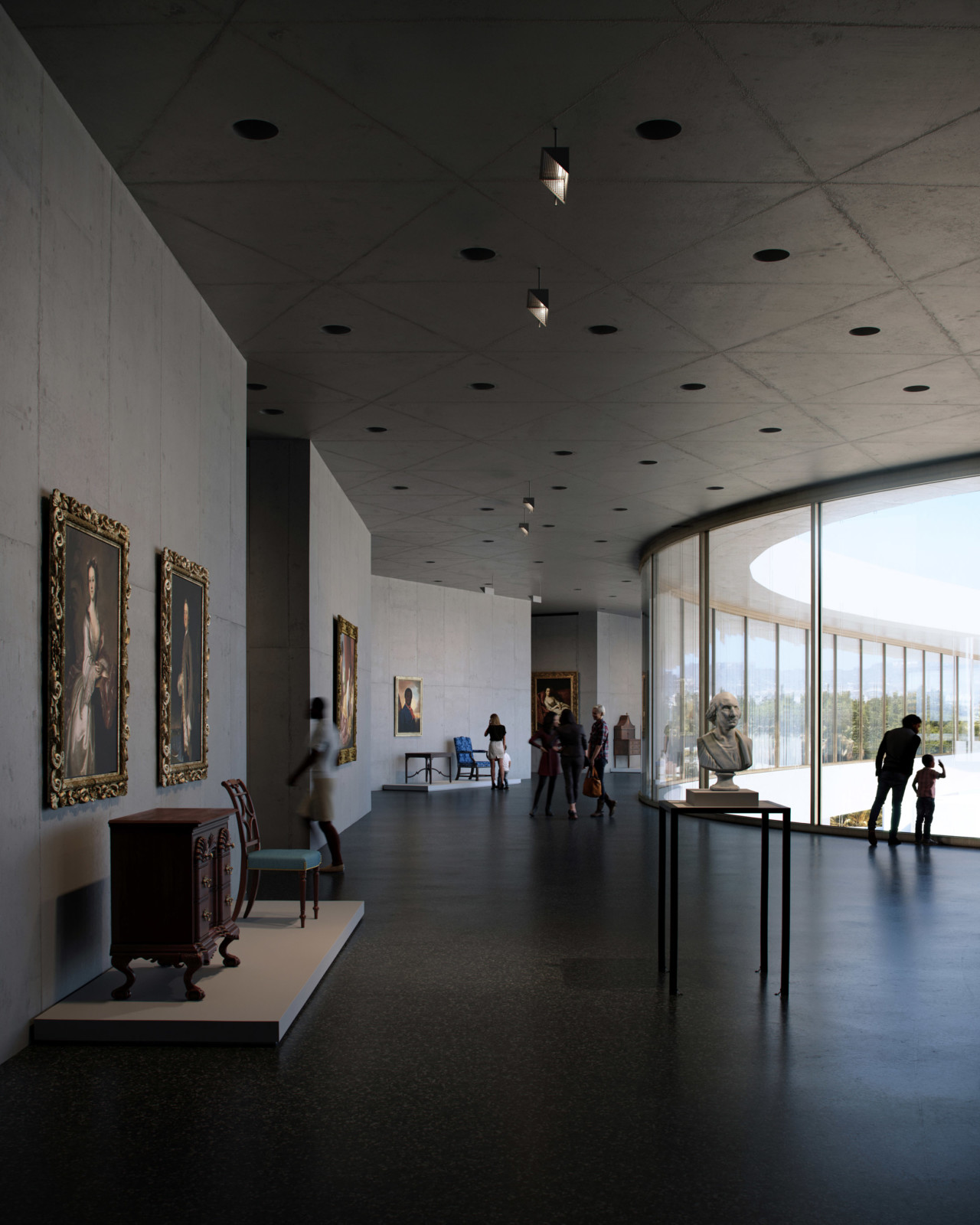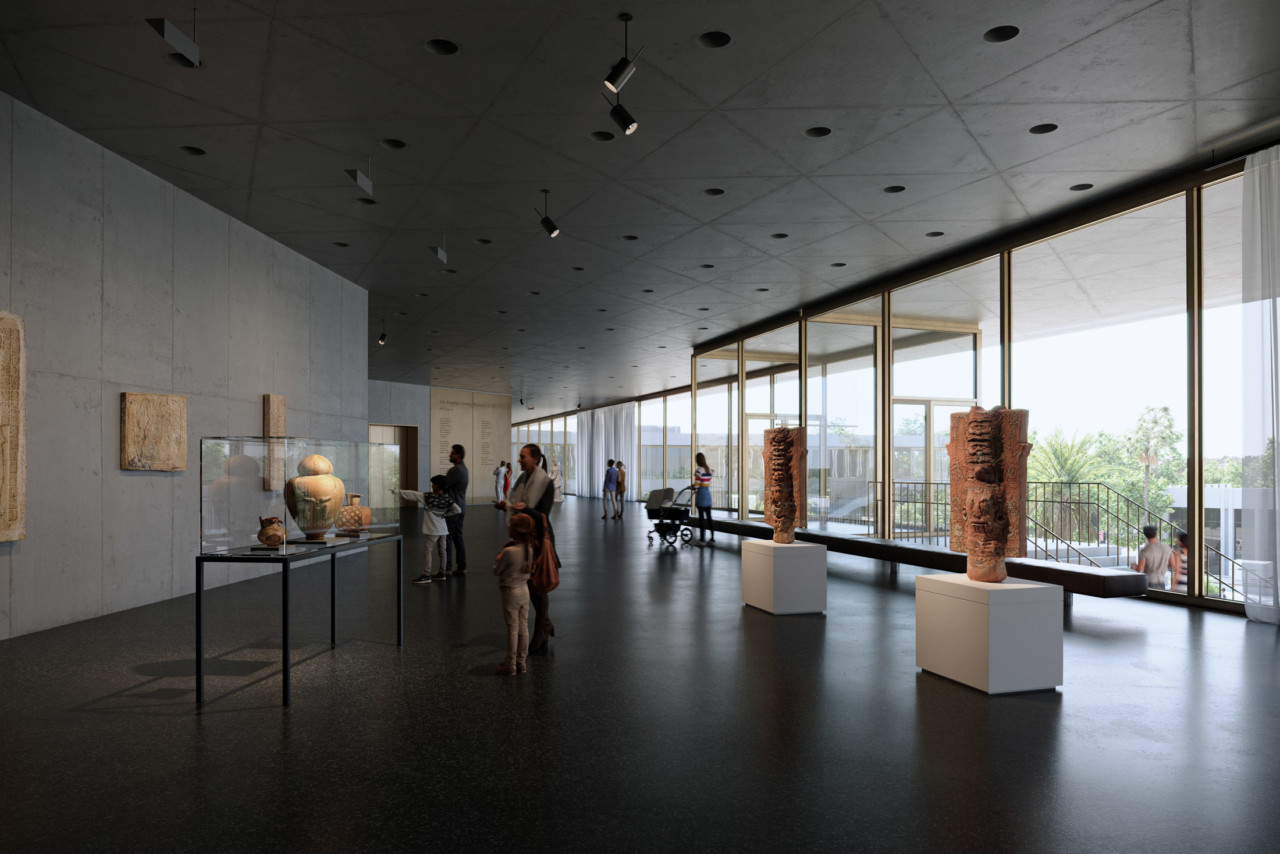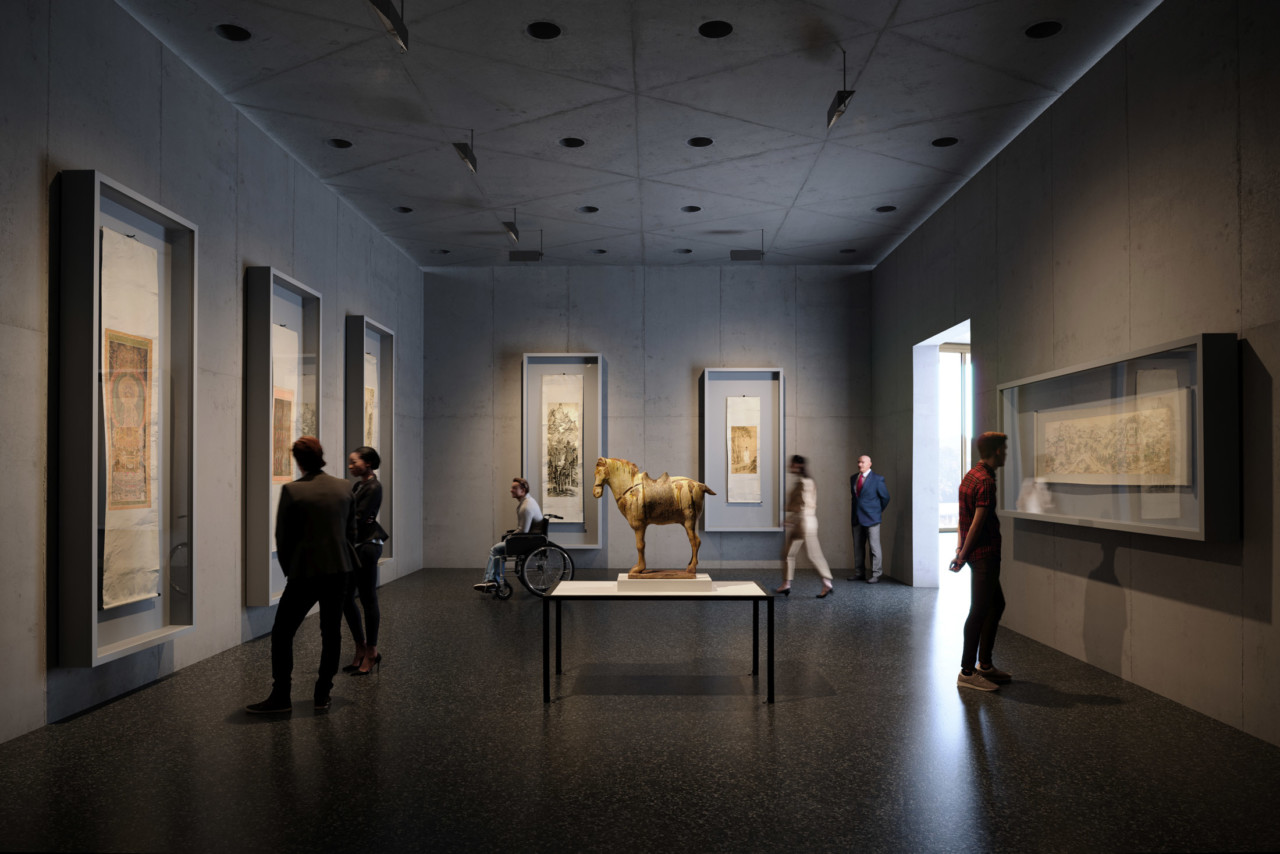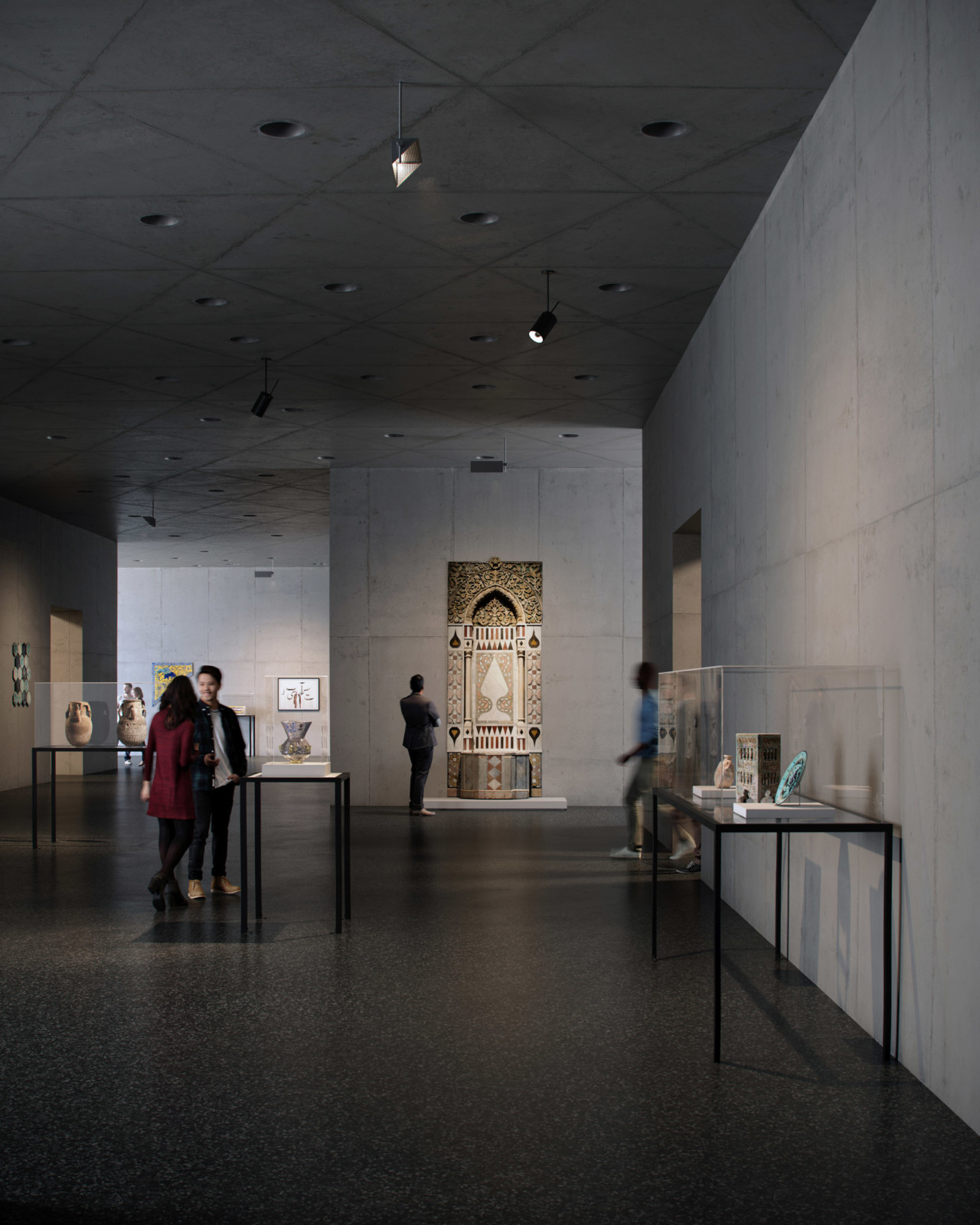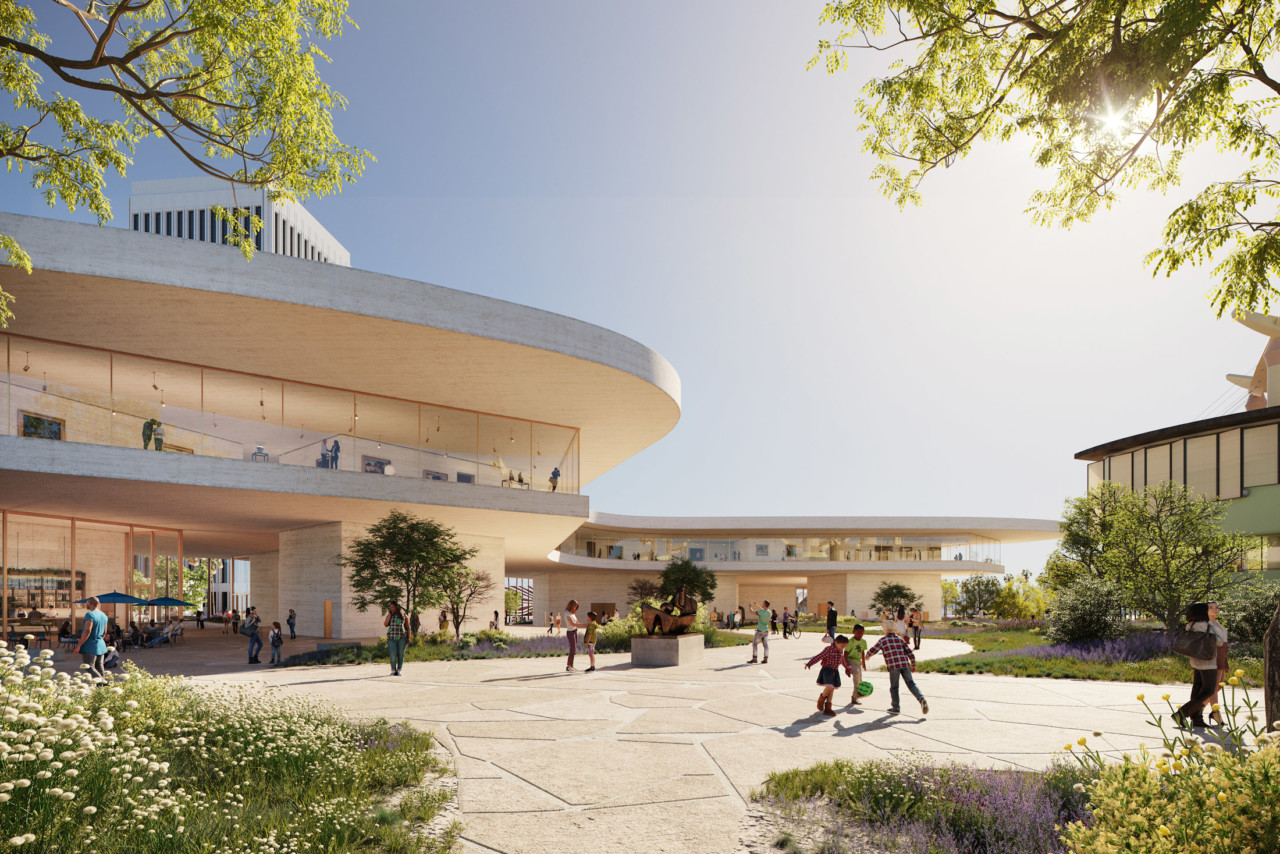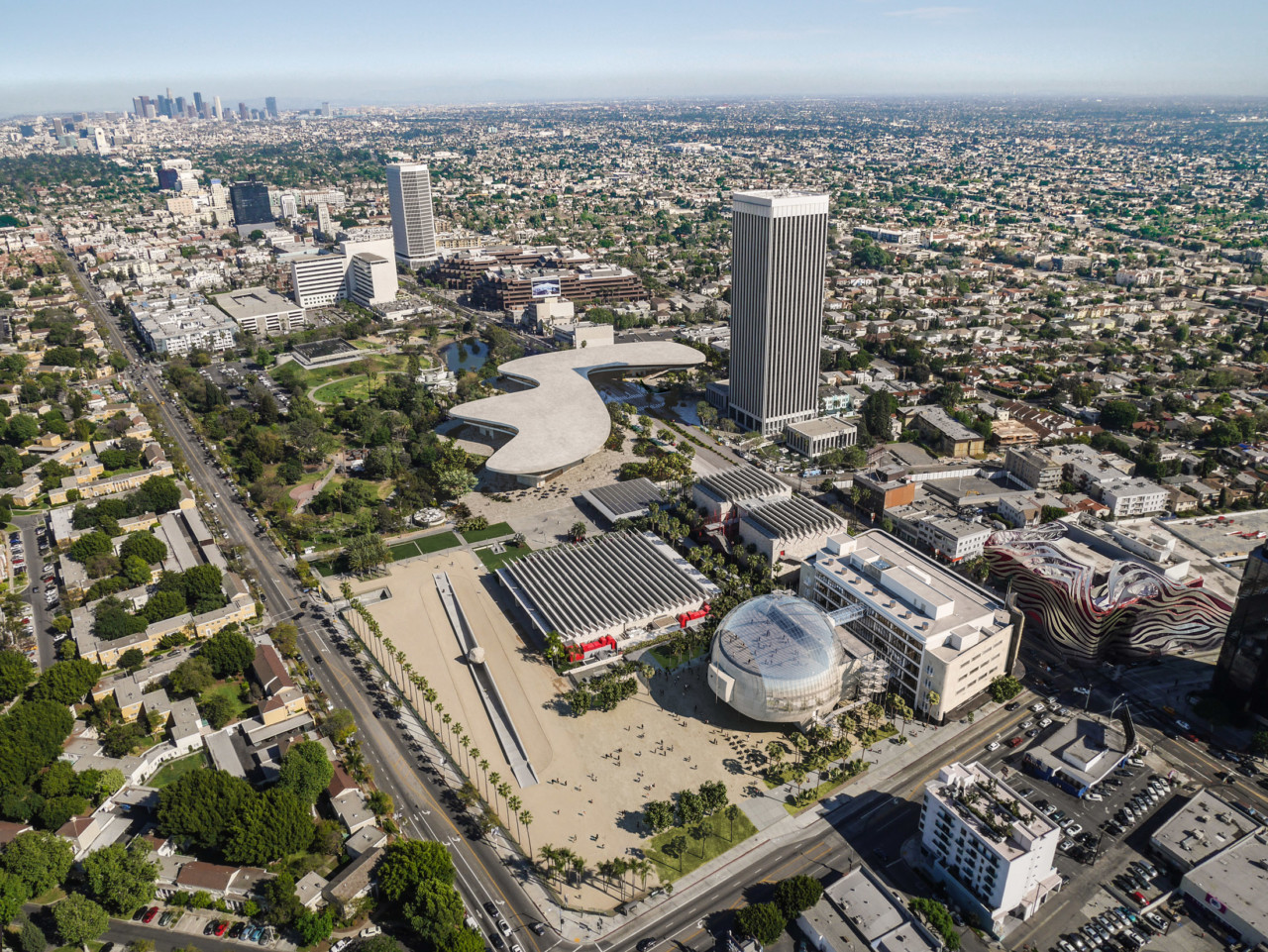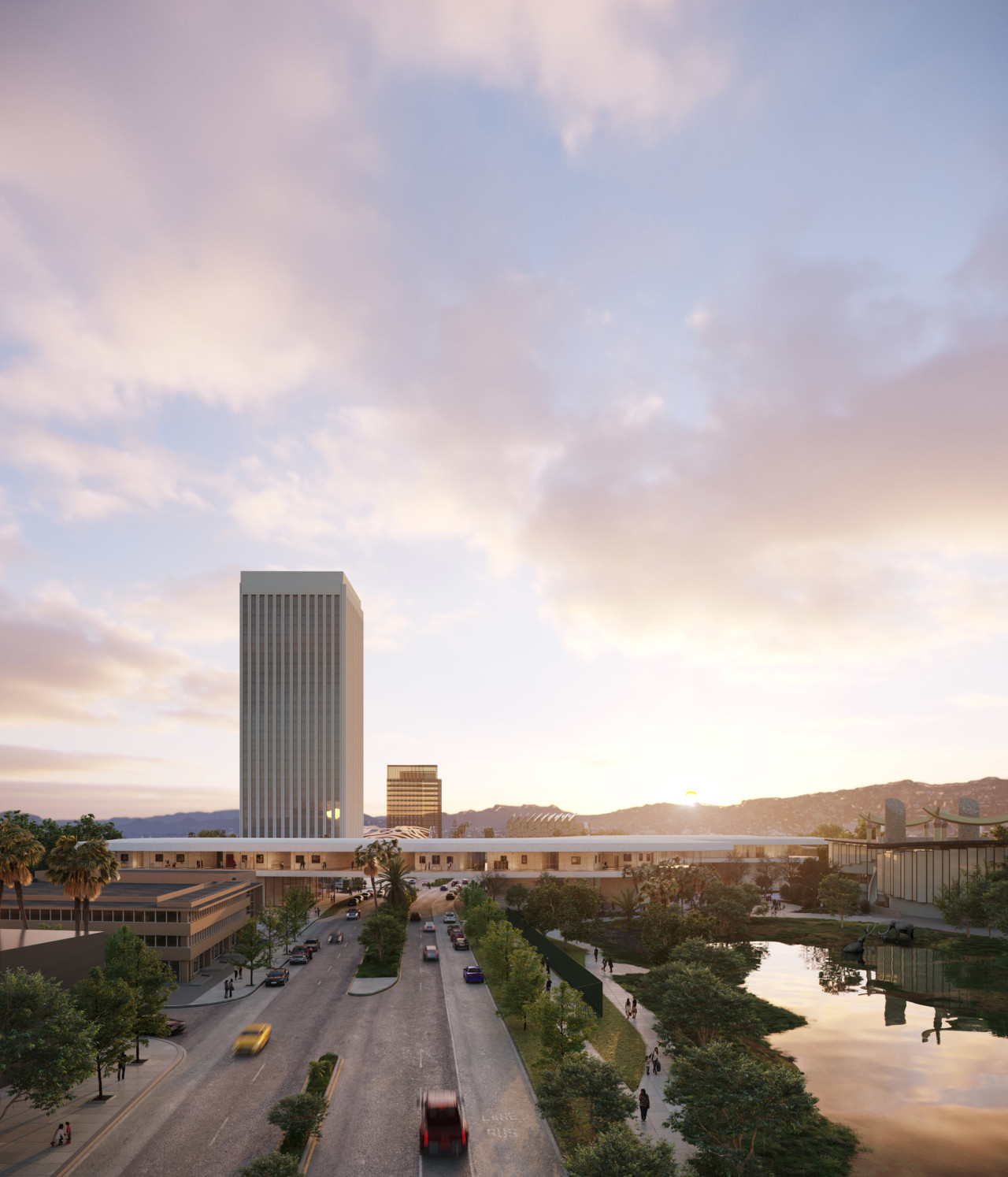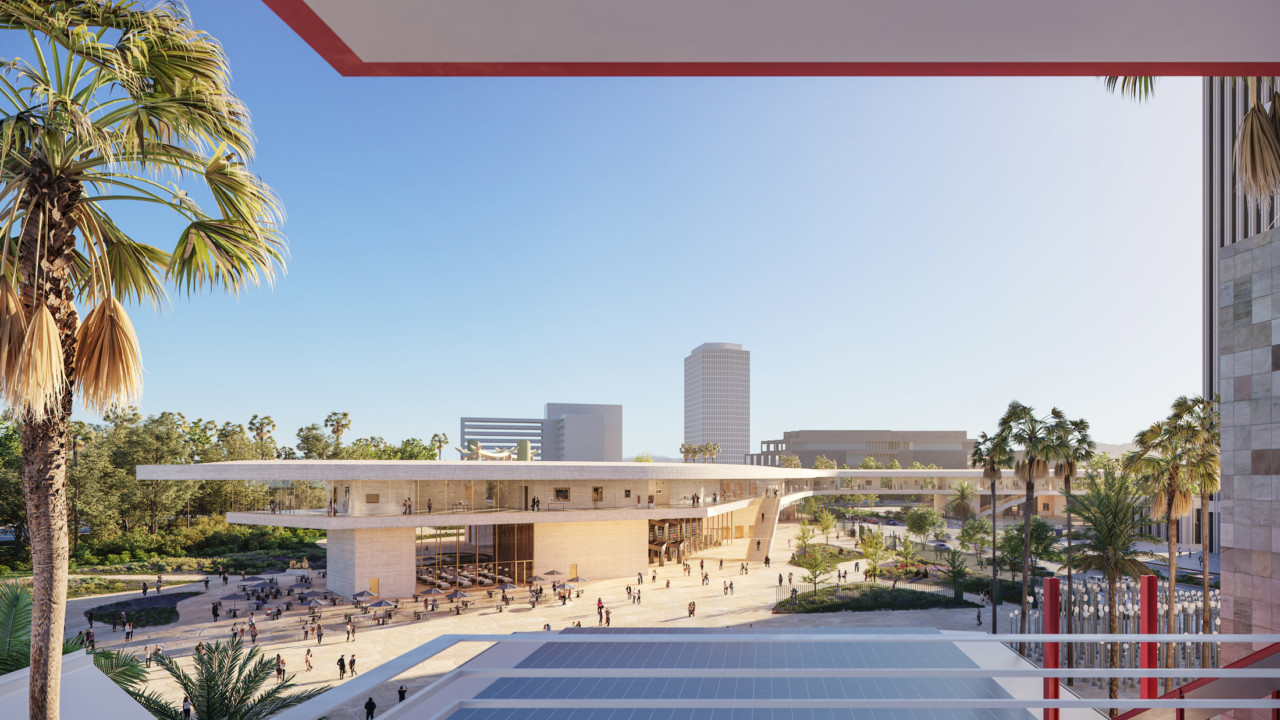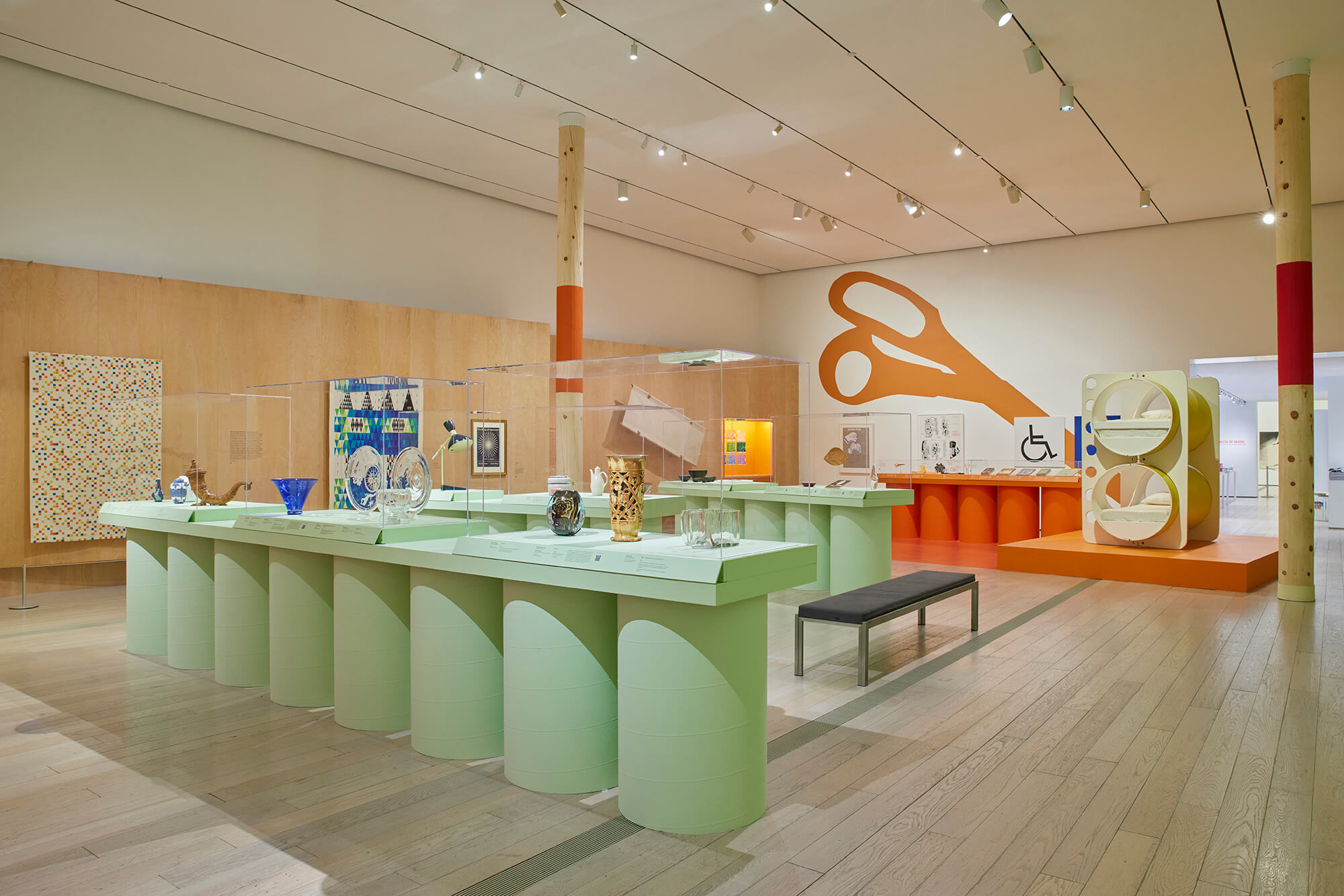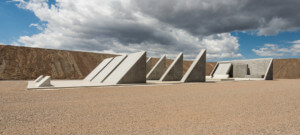The Los Angeles County Museum of Art (LACMA) has released a revised set of floor plans and renderings of its campus redevelopment, the first updates made available to the public since April 2019. While the reduction in space for the David Geffen Galleries remains the same—10,000 fewer square feet than the four buildings it replaces, to be exact—the new images reveal a highly dynamic interior, with a layout as thoughtful and details as exquisite as one might expect from Peter Zumthor, the Pritzker Prize–winning architect behind the bold new addition.
“The best museums in the world,” LACMA director Michael Govan told me over Zoom, “have a variety of spaces to accommodate different types of art.” With that in mind, Govan explained that there are three unique gallery types within the horizontal structure’s top floor. The first are the Terrace Galleries, which will be threaded together along the perimeter of the building and will be illuminated by floor-to-ceiling windows. The Core Galleries are loosely aggregated in the heart of the building and will offer independent spaces for more intimate exhibitions. In the circulation spaces between these gallery types are the Courtyard Galleries, which will offer additional exhibition space for smaller-scale artworks.

Unlike the processional, windowless spaces of the buildings it replaces, the David Geffen Galleries provide visitors the opportunity to chart their own paths through the variegated interior. “The plan is to empower visitors,” Govan said, “by allowing them to get lost while still always being able to retrace their footsteps by finding the perimeter.” While the Broad Contemporary Art Museum and the Resnick Pavilion, the two Renzo Piano–designed structures on the west side of the LACMA campus, will be more regularly used to present large-scale, singular exhibitions, the David Geffen Galleries will stage the museum’s diverse collection using a horizontal, networked, and non-hierarchical layout, a way to “represent the world” through art, according to Geffen.
The exhibition floor will be lifted 30 feet above the grounds of the 34-acre Hancock Park, resting on seven independent pavilions with singular programs, including restaurants, loading docks, a gift shop, and a 300-seat theater on the opposite side of Wilshire Boulevard, replacing the similarly sized Bing Theatre in the original campus plan. Like the Courtyard Galleries inside, the spaces in between the pavilions can accommodate additional museum programming when needed—and revert to unobstructed thoroughfare when not. These open spaces will add over 3.5 acres of outdoor space (2.5 acres in Hancock Park and one acre across Wilshire), and will be landscaped with sculpture gardens and native, drought-resistant vegetation.
Much of the $750 million building cost, it seems, is going to the material palette of bronze mullions, floor-to-ceiling glass, and a unique concrete mix. In a nod to the iconic art galleries of Louis Kahn, the top floor’s continuous ceiling will be triangulated against a grid of circles, which will contain the majority of the mechanical work. “Zumthor doesn’t like doodads,” Govan joked as he explained the difficulty of concealing the wide range of building elements within the sculptural ceiling. Altogether, Govan hopes that the updated renderings convey the “blend of solidity and ephemerality seen in other projects by Zumthor.”
Though the coronavirus pandemic looms over the construction site, Govan feels optimistic that the David Geffen Galleries will be open to the public by 2024. When it does, LACMA will finally see its vast collection under one roof, allowing the encyclopedic museum to tell stories it has never been able to before.






